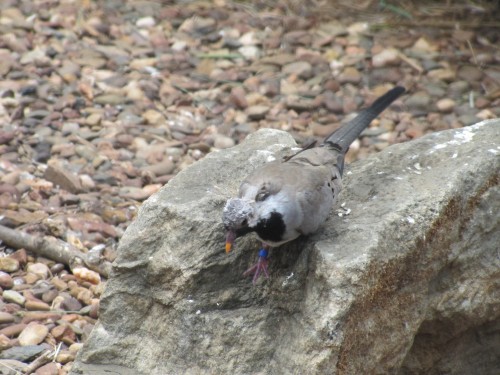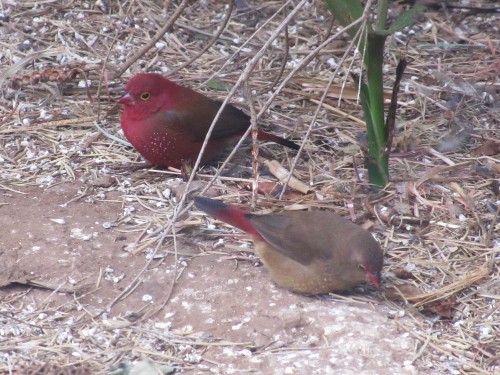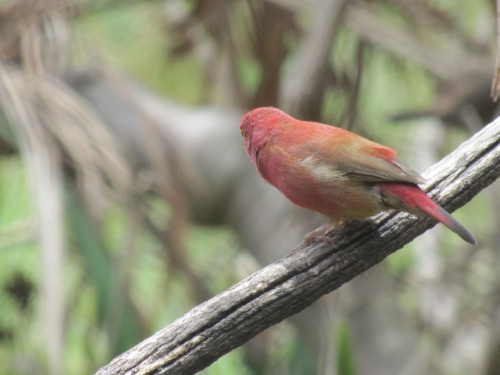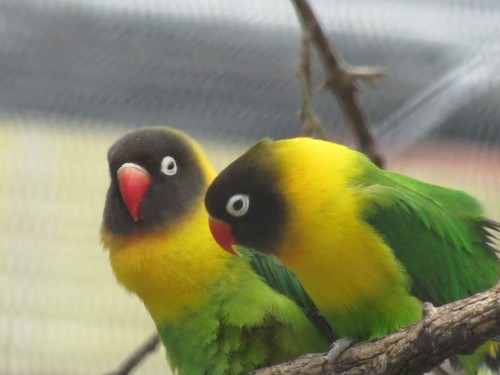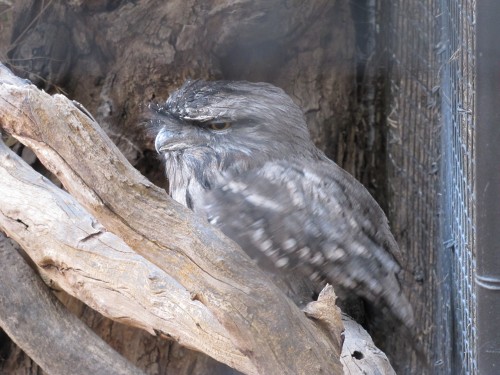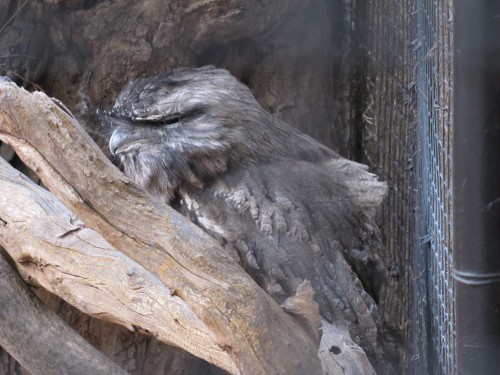Namaqua Dove, Adelaide Zoo
The Namaqua Dove shown in today’s photo was taken in an aviary in the Adelaide Zoo, South Australia.
The natural habitat of this species is southern Africa. It can be found in open woodlands, grassy plains and scrubs, mostly feeding on the ground. Like many doves and pigeons, it makes a flimsy nest and usually lays two eggs.
Although they are found in Ethiopia, I did not get a chance to see this species on my visit there a few years ago.
Red-billed Fire Finch, Adelaide Zoo
The beautiful Red-billed Fire Finch is found in southern Africa. The above photo was taken in our local zoo in Adelaide, South Australia.
The first time I saw this species was in Addis Ababa, Ethiopia. You can read about that experience, and see the photos taken at the time by clicking here and here.
Grenadier Weaver, Adelaide Zoo
There are many spectacular and beautiful birds in Africa. The weaver family of birds are among the more colourful and interesting of them. Adelaide Zoo in South Australia – my home zoo – has a small collection of Grenadier Weavers, as shown in today’s photos. The colourful male is a spectacular bird indeed, especially when in breeding plumage which ranges from bright orange through to red.
Of peculiar interest in relation to this species is a closely related species, the Red Bishopbird. This member of the finch family, also native to Africa, is a commonly kept aviary bird. In the 1920s some of these either escaped or were released from captivity not more than 20km from where I live. A small population survived along the banks of the River Murray for some years, and they were even featured in some earlier field guides. This small population has obviously died out as there have been no reports of any birds since the late 1950s.
Yellow-collared Lovebird, Adelaide Zoo
I must admit that I am not a fan of Lovebirds. I have heard that they can be very aggressive as a cage bird. I am also wary that some will escape from captivity and establish feral populations here in Australia. This has happened with other species over the years and it would mean that they would compete with native species for food and nesting sites.
Despite these feelings, I must admit that the birds shown in my photos today are attractive, so I can understand why some people would want to keep them as pets. These photos were taken through the wire of an aviary in the Adelaide Zoo here in South Australia.
Yellow-collared Lovebirds are native to Tanzania in southern Africa.
Tawny Frogmouth, Adelaide Zoo
The nocturnal bird called the Tawny Frogmouth is one of my favourite birds. Ever since we saw one in a tree above our tent near Lake Hattah in north west Victoria many years ago, this species has had a special place in our lives.
Being nocturnal, it is not a bird seen all that often. It is more commonly heard calling at night. From time to time we have one in our garden. One has even banged against our sliding glass door whilst catching a moth fluttering there.
Finding them in broad daylight is a challenge. They are usually well camouflaged perched on the limb of a tree, their feathers blending in with the colours and markings of the branch. When smaller birds – such as honeyeaters – become aware of the presence of a frogmouth or an owl for that matter, they set up quite a fuss, drawing attention to the roosting bird.
The bird shown in today’s photos is a captive bird, part of the excellent collection of birds of the Adelaide Zoo in South Australia.
